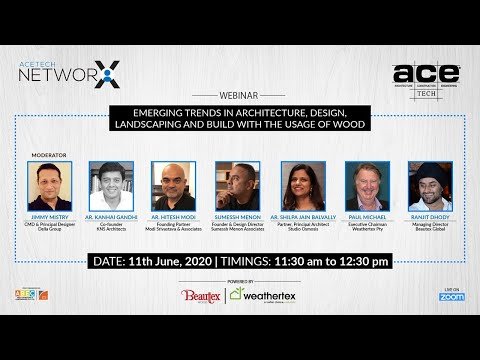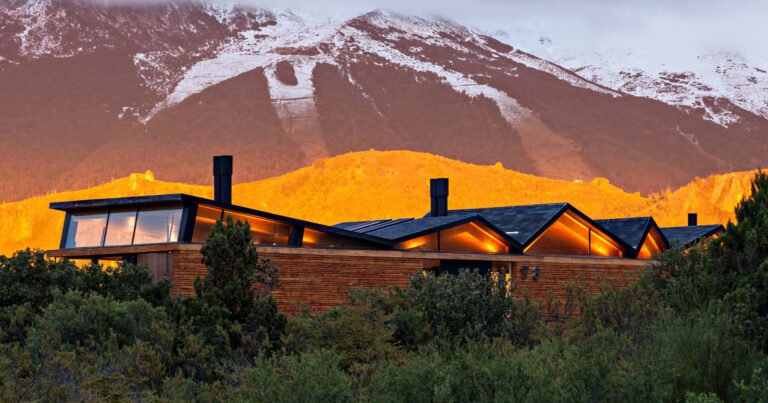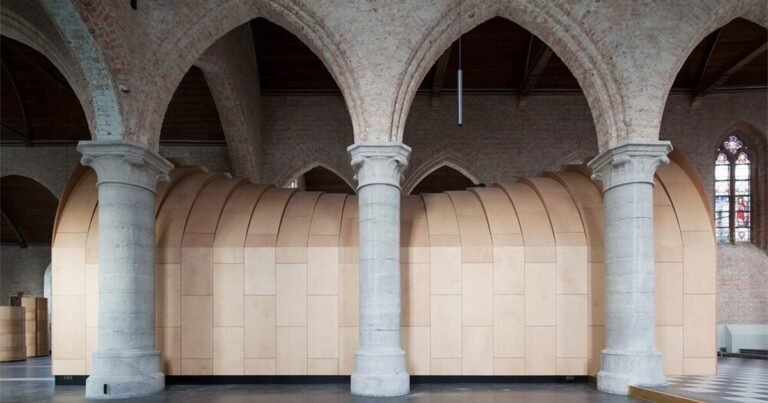using AI, arturo tedeschi converts storyboard texts into striking visuals
Artificial intelligence meets film storyboarding
Artificial intelligence meets film storyboarding in Arturo Tedeschi’s latest work. Using the generative AI system DALL·E, the Italian artist interpreted descriptive texts inspired by famous movies into rich, colorful, and impressively detailed visuals.
‘The art of storyboarding deserves attention not only for the graphic quality, technique, or quick trait, but as a creative bridge between screenplay and film or, if you like, as a link between language and images. AI systems went beyond the ‘traditional’ process where high-resolution pictures were created based on a training set of pre-existing images. Cutting-edge systems like DALL·E have learned the relationship between image and text used to describe them,’ writes Tedeschi.
Featuring storyboarding texts inspired by movies like ‘Pulp Fiction’ and ‘Back to the Future’, the project reveals how new, meaningful possibilities can be unlocked using this compelling technology.
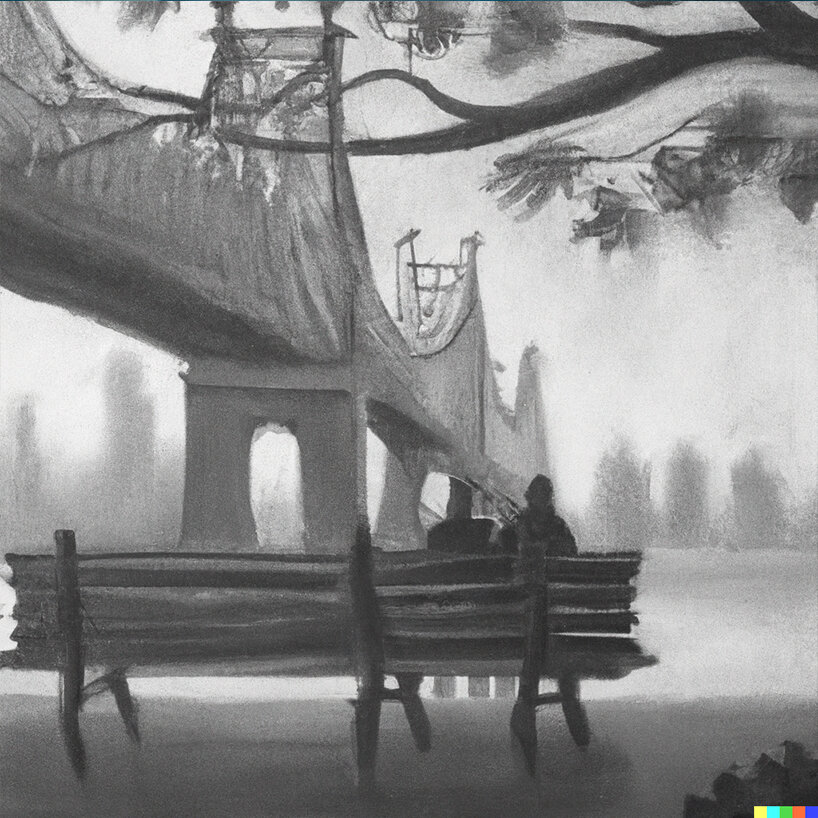
(Manhattan W.Allen) ‘a b/w scene of a man and a woman seated on a bench, in New York, Queensboro bridge in the background, foggy atmosphere’
from ‘manhattan’ to ‘pulp fiction’
Tedeschi (see more here) created the first image using text describing a famous scene in Woody Allen’s masterpiece, ‘ Manhattan’. The description goes as follows: ‘A b/w scene of a man and a woman seated on a bench, in New York, Queensboro bridge in the background, foggy atmosphere.’
Jumping back to AI, the artist asked DALL·E to work as a storyboard artist using the description selected above; to complete the toolkit, Tedeschi threw in some pictures of the Queensboro bridge to better represent the scene. The resulting images were created in 15 seconds.
‘It is very interesting how the AI merges ‘archetypal’ concepts (man, woman, seated, bench) with elements derived from the use of real-world descriptions: the sentence ‘Queensboro bridge’ triggered – along with the generation of the bridge itself – realistic and specific urban details like trees, skyline,’ he comments.
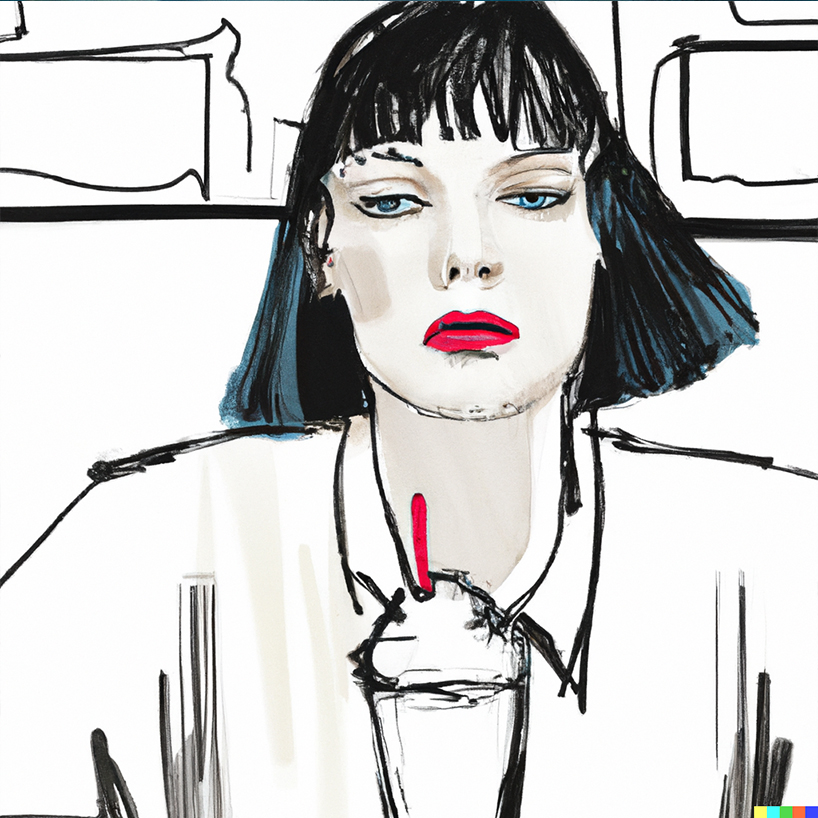
(Pulp Fiction) ‘a sketch of a woman with large blue eyes, thin nose, red lipstick and black bob with fringe, wearing a white shirt, seated at a table, drinking a milkshake with a straw’
As a second experiment, Tedeschi tried to describe the fictional character of Mia Wallace from ‘Pulp Fiction’ using the following description: ‘a sketch of a woman with large blue eyes and black bob with fringe seated at a table and drinking a milkshake with a straw, American bar background.’
The first iteration generated a naïf sketch that was surprisingly improved by adding a few more details: ‘a sketch of a woman with large blue eyes, thin nose, and black bob with fringe, wearing a white shirt, seated at a table, drinking a milkshake with a straw, American bar background’.
Using ‘serious woman’ and adding ‘with a red lipstick’ and ‘white shirt’ was enough to get a couple of sketches closer to the original character.
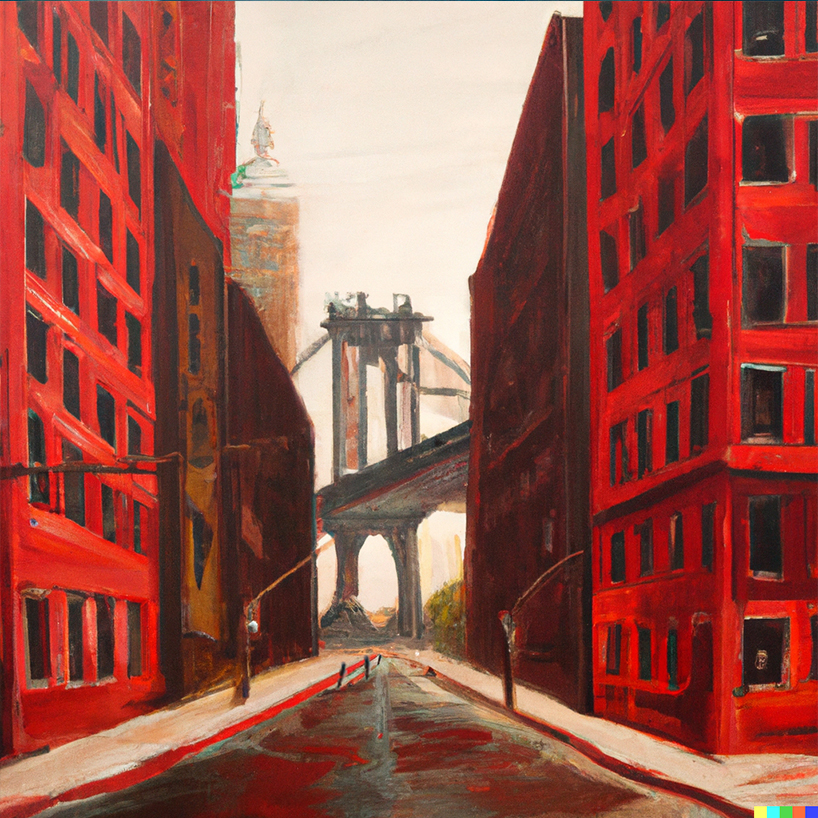
(Once Upon a Time in America) ‘an oil painting of a street with red buildings on the two sides and the giant Manhattan bridge in the background, central perspective, human silhouettes’
The research continued with scenes from other movies like ‘Ex Machina’, ‘Once Upon a Time in America’, ‘Blade Runner’, and ‘Back to the Future’. Tedeschi concludes by writing: ‘The results demonstrated that AI can be used right away as a powerful and fast companion to visualize ideas. In the future, systems like DALL-E will probably be integrated in the design process. More than a tool, AI will probably expand our possibilities and the way we create things, without taking over the human creative process.’
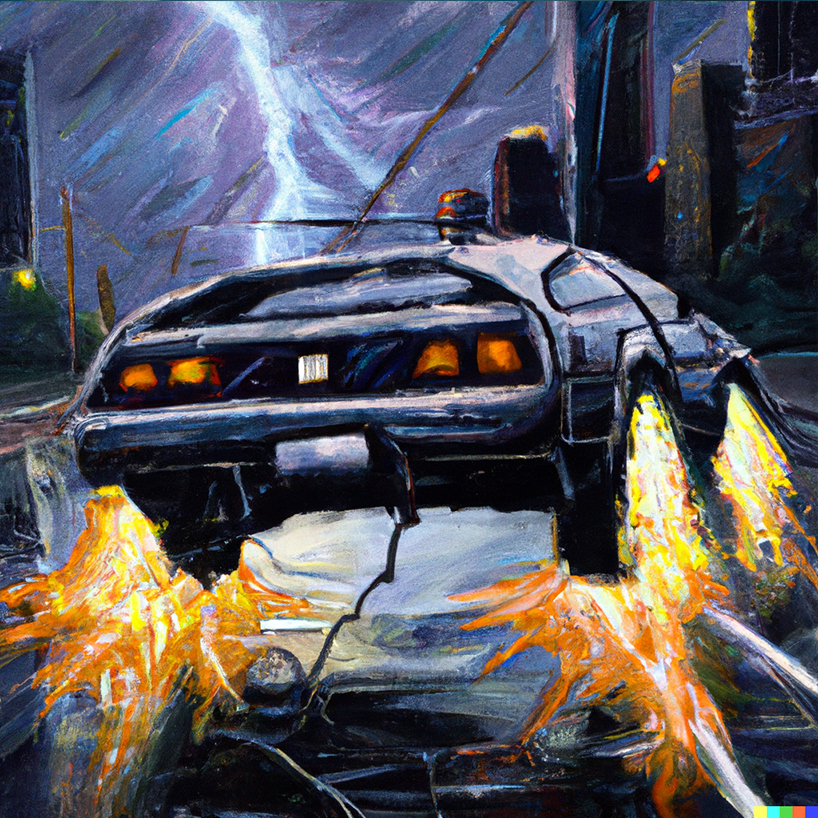
(Back to The Future) ‘an oil painting of a Delorean dmc12 hit by a lightning, dark city background, wet road’
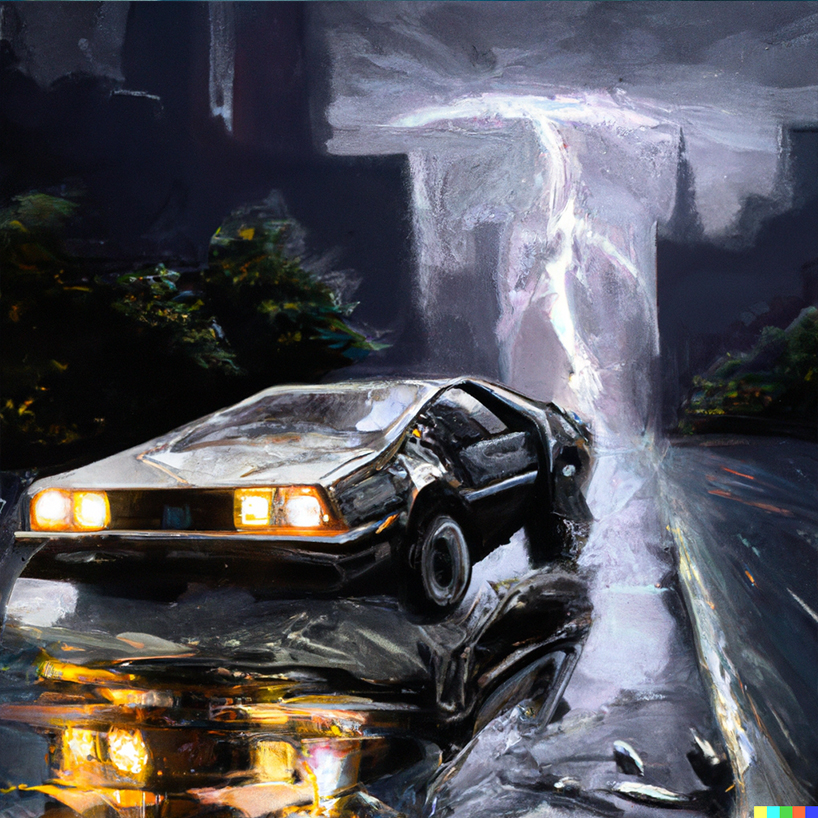
(Back to The Future)


